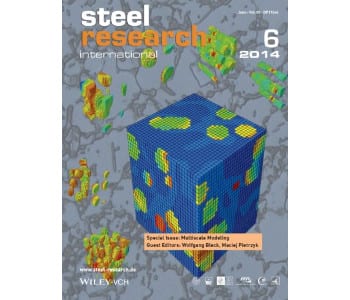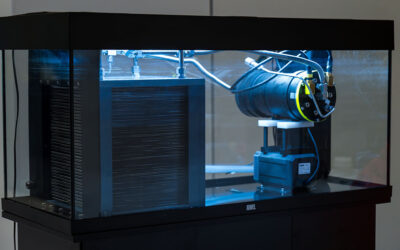 In almost all scientific disciplines, computer simulation has reached the status of an individual scientific method. Material science and engineering is no exception to this trend, and this increasingly permits computational material and process design. Now, a recently published special issue of Steel Research International, guest edited by Wolfgang Bleck (Aachen, Germany) and Maciej Pietrzyk (Krakow, Poland), has been dedicated to multiscale modelling methods as a new design tool for processes and materials.
In almost all scientific disciplines, computer simulation has reached the status of an individual scientific method. Material science and engineering is no exception to this trend, and this increasingly permits computational material and process design. Now, a recently published special issue of Steel Research International, guest edited by Wolfgang Bleck (Aachen, Germany) and Maciej Pietrzyk (Krakow, Poland), has been dedicated to multiscale modelling methods as a new design tool for processes and materials.
Steel, an engineers’ material, is characteristically produced in large quantities. It always needs to be processed according to economic rules of high productivity and reliability. A sound prediction of materials and components properties is of the utmost importance. Such a prediction requires tracking of microstructure and property evolution along the entire component life cycle starting from a homogeneous, isotropic, and stress-free melt and eventually ending in failure under operational load.
This themed issue focuses on presenting research results on various aspects of modeling at various scales, from nano through micro and mezo to macro, and enabling exchange of experience. The articles represent a broad view on modeling methods, starting with atomistic and molecular approaches, cellular automata, phase field, and crystal plasticity up to finite element methods for macro scale applications.
Following the scope of the journal, all papers consider special advanced steels with unique properties. The topics of interest represent a variety of phenomena, including solidification, plastic deformation, static and dynamic microstructure evolution, texture evolution, and phase transformations. The effect of microstructural and morphological parameters, as well as the impact of strain path change on product properties is addressed in some papers. Finally, a few papers deal with general multiscale applications.
Read selected articles now for free!
To study the anisotropic hardening behaviors of dual‐phase steels under strain path changes, a meso‐scale finite element analysis was considered with the representative volume elements by Myoung‐Gyu Lee et al.
Alexander Timoshenkov et al. present different modeling approaches for the description of the microstructure evolution in a typical C–Mn micro‐alloyed steel for pipes and tubes in the oil field industry.
Nikhilesh Chawla et al. perform microstructure‐based finite element modeling on different microstructures of an austenitic‐ferritic cast duplex stainless steel using the constitutive behavior of individual phase obtained from micropillar compression tests.

















